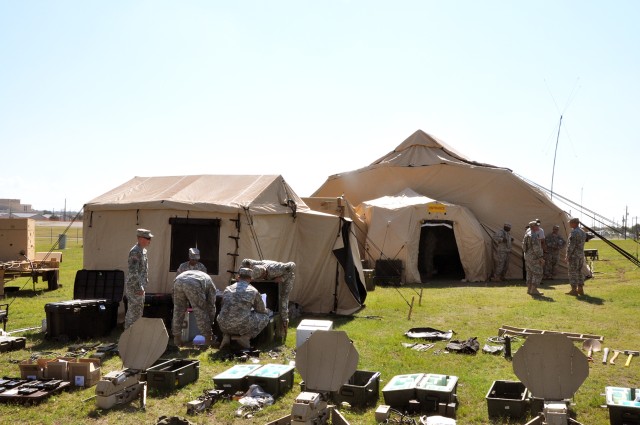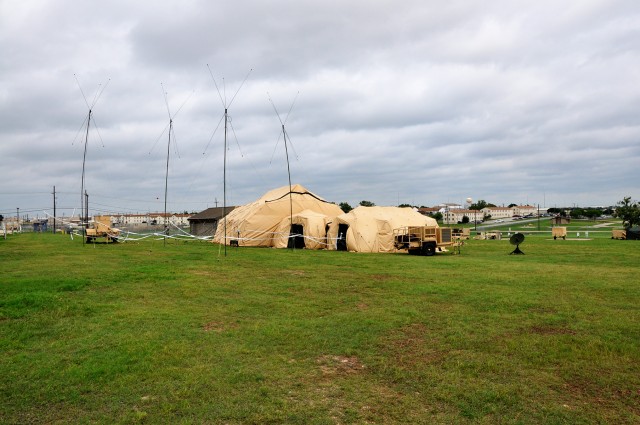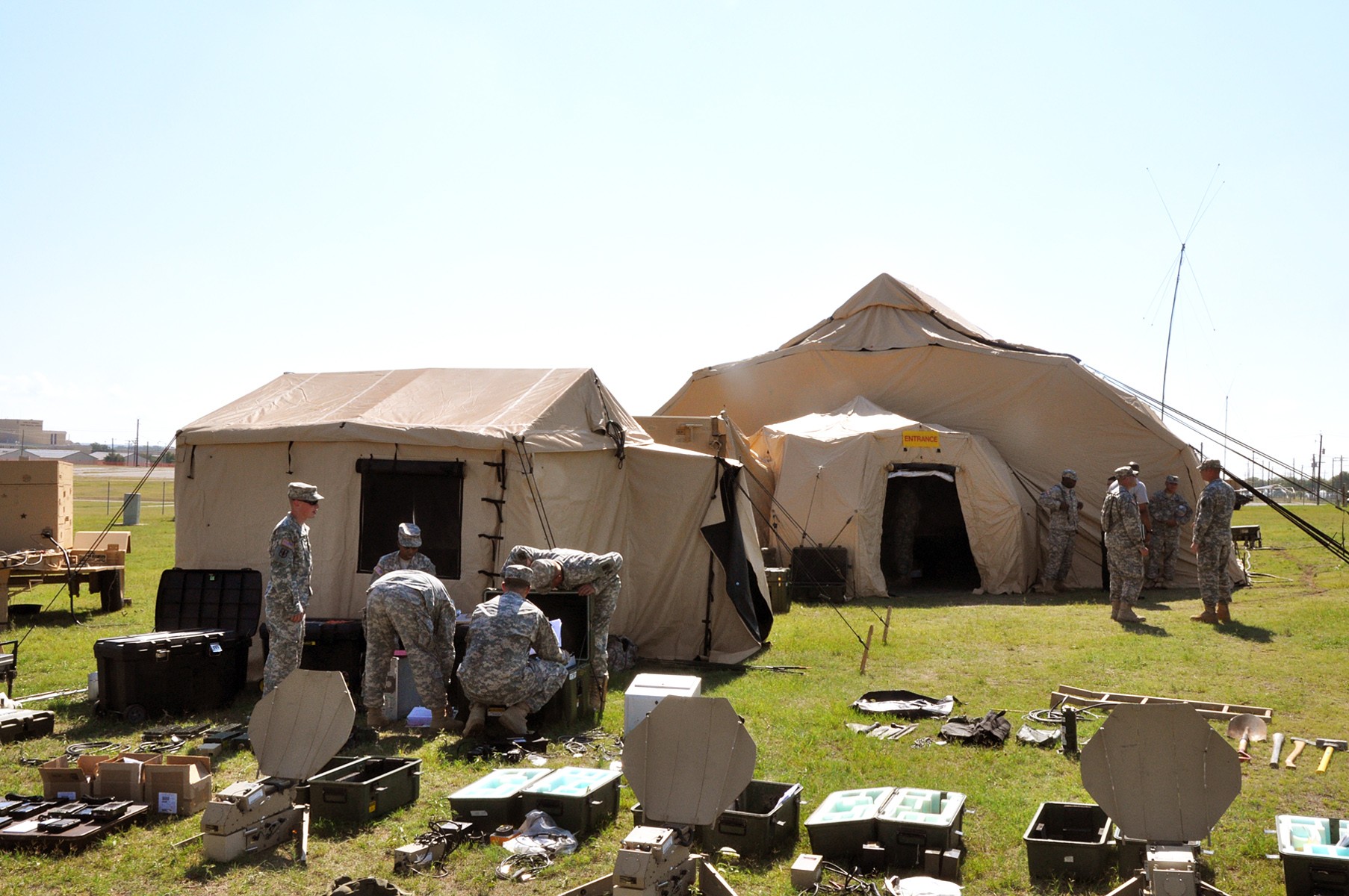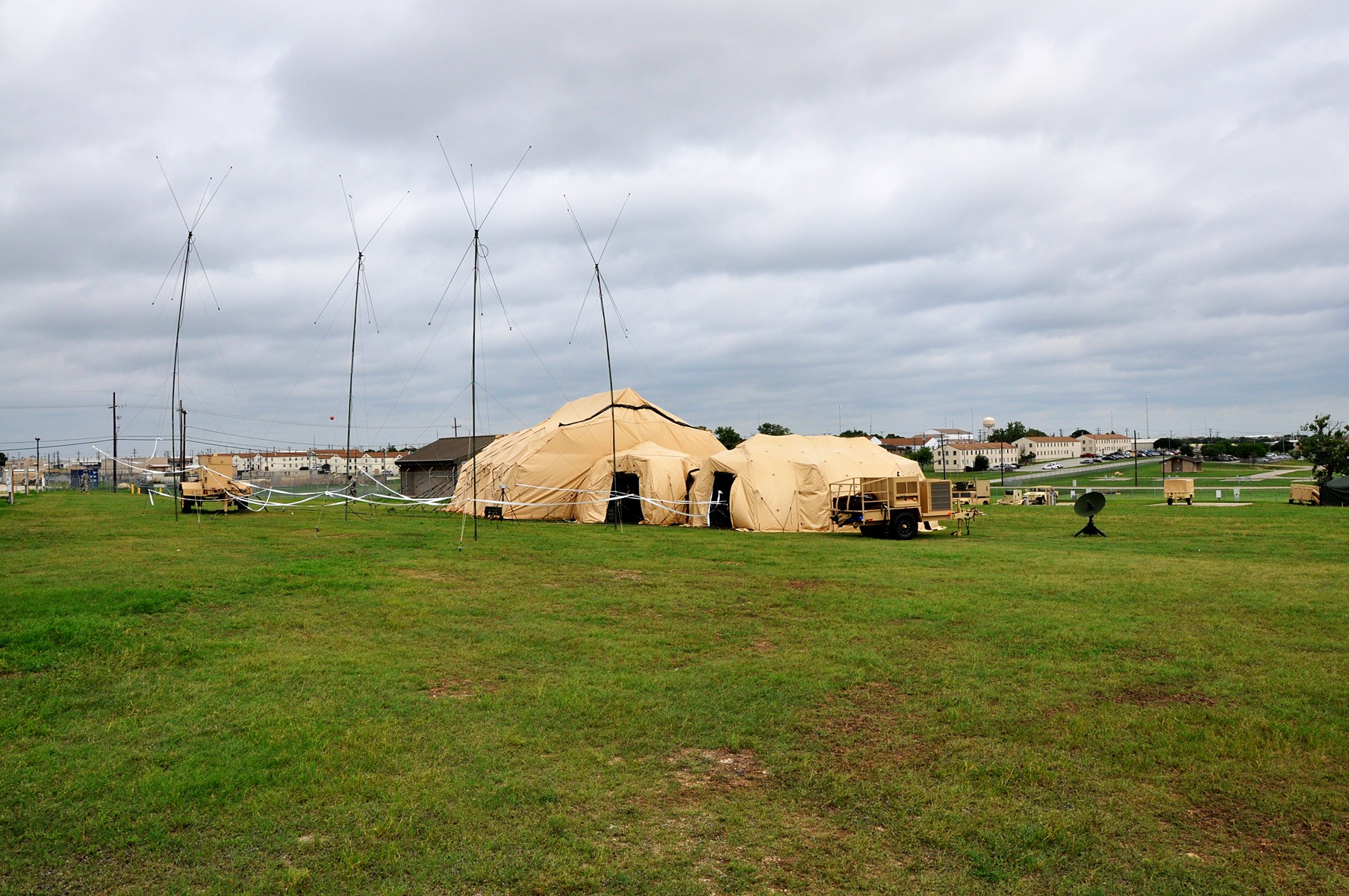FORT HOOD, Texas-The 41st Fires Brigade packed up its equipment and rolled out to the field for their validation exercise during the Battle Command Systems of Systems Integration Training, here, July 6-16.
The training was broken down into two phases; each comprised of three events.
During event one, the brigade was able to come together and construct the command post, erect the tents, lay out power grids, develop the staff sections cells properly, establish all the systems in the appropriate locations, and lastly, the communication section connected all the systems together.
"This is our first time getting the new DRASH [deployable rapid assembly shelter]," said Sgt. 1st Class Joseph Coleman, a Fredericksburg, Va., native and operations supervisor. "About ten percent of the original staff was retained after this past deployment so we're concentrating on getting all the Soldiers trained up on all of the new systems and broken down into teams to function effectively."
The second event was the validation portion of the exercise. During the validation process, all the applications, systems, voice and digital communication had to work within the brigade and throughout all of the battalions' areas of operations.
"The validation process is very critical to the mission success of the brigade during deployments and garrison operations," said Coleman. "It's very important to know your perspective area. The Soldiers have to be comfortable doing their jobs and possibly the jobs of others."
After the validation process, the brigade shifted into the phase two portion of the training that consisted of scenario-based situations.
"The purpose of the second phase is to train the battle staff on all the intricate systems and to make sure they are proficient at all their processes in the command post more expedient," said Esau Esau Jr., native of America Samoa, one of the trainers.
The 11-day exercise gave the brigade a chance to come together to work as a single entity and to learn and re-learn some of the newer systems and communicate within the brigade and to their out-lying battalions.
Even though the training was important and the validation process was critical to mission success, safety proved to be just as important to the mission.
"Safety is important because these Soldiers are relearning all of these skills. It's very important that everyone knows what right looks like," said Sgt. Maj. Robert Norvell, of Louisville, Ky., the operations sergeant major. "We have Soldiers that haven't been in this environment for awhile. They're working long hours in the sun and the rain, we have to be careful but be ready at the same time."
At the end of the two weeks, the "Rail Gunners" worked through a few situations, learned their new systems, and validated.




Social Sharing